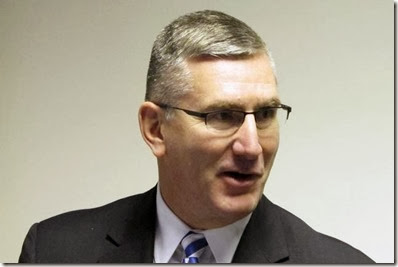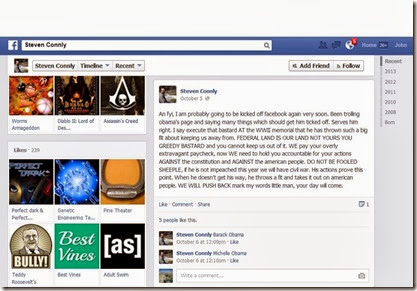(Editor’s note: this post contains the recently published story on the Northern Cheyenne and Lummi Indians’ fight against coal, including video and a 360° interactive panoramic photograph of the Otter Creek Valley.)
OTTER CREEK -- Sitting just a few hundred feet from the banks of Otter Creek, on the fertile plains the Northern Cheyenne Indians have called home for thousands of years, Sundance Priest Kenneth Medicine Bull carefully packs tobacco into the bowl of a ceremonial pipe.
About a hundred onlookers, many wearing red T-shirts with the words “Save Otter Creek” stamped on them, watch silently as Medicine Bull rhythmically recites a prayer in his native tongue. Medicine Bull puffs the pipe several times, and then with his free hand washes the smoke over face and head. He then gently touches the pipe to the ground, turns it, and then hands it to his son, J.D. Little White Man, who repeats the ritual.
Among the onlookers are five members of the Lummi Nation, an Indian tribe from Washington’s Puget Sound, who traveled some 1,200 miles to this remote prairie not far from where Gen. George Armstrong Custer famously made his last stand nearly 140 years ago.
The Lummi brought with them a 22-foot totem pole hand-carved from a 300-year-old Western redcedar tree so that Medicine Bull could offer it a blessing. The Lummi people have created a tradition of carving and delivering totem poles to areas struck by disaster or otherwise in need of hope and healing.
The Lummi, like the Northern Cheyenne, are fighting for the future of their homelands against coal mining and exportation. The totem pole, known as a healing totem, began its spiritual journey at Otter Creek on Wednesday. It’s the first stop on Pacific Northwest trek to North Vancouver, British Columbia, where it will eventually stand as a cross-border symbol of spiritual solidarity in the fight against industrial resource extraction of coal and oil sands.
“We need to protect our way of life,” Medicine Bull said in an interview after he blessed the Lummi totem pole on the first stop of its spiritual journey. “I addressed the grandfathers, those who have gone before us, and I told them the reason we were here and I asked them to hear our prayer and stand beside us.”
Standing beside the Northern Cheyenne and the Lummi at the totem blessing ceremony were area ranchers. Many ranchers in the region are fighting against coal development, citing the loss of prime agriculture land. They’re also angered by possibility that land that has been in many of their families for more than a century could be condemned to develop the proposed Tongue River Railroad.
Roger Sprague and his wife, Bonnie, ranch near Greenleaf Creek, not far from Colstrip.
Sprague said his family trailed into the Rosebud Valley in 1881 and have traded with the Northern Cheyenne ever since.
“We’re neighbors with these people and we’re proud to work with these people,” Sprague said at the Otter Creek blessing ceremony. “We don’t want this mine in here. We don’t want the railroad in here. It’s our life. We’ve fought hard to put it together and we’d like to keep it that way.”
Brad Sauer manages a ranch north of Lame Deer, just outside the Northern Cheyenne Indian Reservation boundary. The ranch is home to ancient teepee rings, hunting points, rock engravings and other signs that native people occupied this area long before European settlers arrived.
Sauer said it’s no wonder the Northern Cheyenne settled this part of the country with its verdant stream bottoms, abundant game, and rich grassland. It’s the same reason ranchers have survived here for nearly 150 years.
“We’re looking at country here that could be impacted by coal mining,” Sauer said during an interview on the ranch earlier in the day. “There are coal mines close to here.”
Sauer said ranchers raise food on these lands, and they can’t do that without ample supplies of clean water. Industrial mining operations could threaten both the quantity and the the quality of the water that nurtures these valleys.
“It’s getting to be harder and harder with the impacts from energy development and everything else,” Sauer said. “We’re not against coal mining, we think it can be done responsibly, but we’d like to see it done in a way that doesn’t affect what we do in a long-term fashion.”
Many people see Otter Creek as ground zero in the battle over the future of coal development in America. If Otter Creek coal is ever to be mined, then its probable its final domestic destination will be a coal export terminals on the West Coast.
One of those terminals is proposed to be built on the Lummi people’s ancestral homeland, a place called Cherry Point. From there the coal would head to Asian markets.
Natural gas and renewable energy sources such as wind and solar are making coal less desirable as an energy source here in the United States. Arch Coal, the company who bought the leases to mine coal at Otter Creek, admitted that fact in recent filings with the federal Securities and Exchange Commission.
“Gas-fueled generation has the potential to displace coal-fueled generation, particularly from older, less efficient coal-powered generators,” Arch Coal President and CEO John W. Eaves wrote in the company’s March 1, SEC 10-K filing. “We expect that many of the new power plants needed in the United States to meet increasing demand for electricity generation will be fueled by natural gas because gas-fired plants are cheaper to construct and permits to construct these plants are easier to obtain as natural gas is seen as having a lower environmental impact than coal-fueled generators.”
So Arch is now looking to sell its coal elsewhere, which likely means shipping it overseas to Asian markets.
That prospect is of great concern to the Lummi people, who would be directly impacted by the development of a massive coal export terminal.
Jewell Praying Wolf James is a Lummi Nation master carver and tribal leader who designed and crafted the healing totem pole. He and four members of the Lummi House of Tears Carvers brought the totem pole to Montana for the ceremony. James’ healing totem poles have been raised at sites throughout the country, including the sites of the 9/11 terrorist attacks.
James said like the Northern Cheyenne, the Lummi people’s way of life and ancestral range grounds, including ancient burial grounds, are threatened by the prospect of coal export to Asia.
“We’re concerned about protecting the environment as well as people’s health all the way from the Powder River to the West Coast,” James said. “We’re traveling across country to help unify people’s voice. It doesn’t matter who you are, or where you’re at, or what race you are — red, black, white or yellow — we’re all in this world together and we have to live in the aftermath of corporate development.”
Lummi Nation member and House of Tears carver Romona Charles said the proposed coal export terminal at Cherry Point would impact human health, destroy fish habitat, and disrupt sacred Lummi burial grounds.
“The terminal that they want to build ... is right on top of an ancestral burial site,” Charles said. “It was an old village and it’s a known grave site. My people are from there. I truly believe that if you allow these white corporations to stomp on one grave, they’ll dance on all the rest. There has not been one time thought I thought, ‘let’s go put a coal port at Arlington Cemetery.’”
After the prayer, James addressed the 100 or so people who gathered for the ceremony.
“We’re doing everything we can to protect our treaty rights and our way of life,” James said.
James offered a sharp rebuke of corporate greed and industrial-scale resource extraction that threatens the homelands and ways of life of people who have occupied these impacted landscapes for millennia.
“We kill the Earth as if we had a license to do it. We destroy the life on it as if we were superior. And yet deep inside we know we can’t live without it,” James said. “We’re all a part of creation, and we have to find our spot in the circle of life.”
The Lummi totem pole traveled to Missoula on Thursday and on to Spokane on Friday. It was schedule to make its way accross eastern Washington and northern Oregon and arrive in Portland, Ore. today. Later this week it heads back north to Seattle.
On Friday the Lummi will bless the totem pole at Xwe’chi’eXen, the Lummi name for the Cherry Point area. On Sunday the totem makes the final leg of its journey to Tsleil-Waututh blessing ceremony in North Vancouver, British Columbia.


 As
As 







 And lets not forget the not-too-distant past when a group of anti-government extremists from Connly’s neck of the woods
And lets not forget the not-too-distant past when a group of anti-government extremists from Connly’s neck of the woods 


